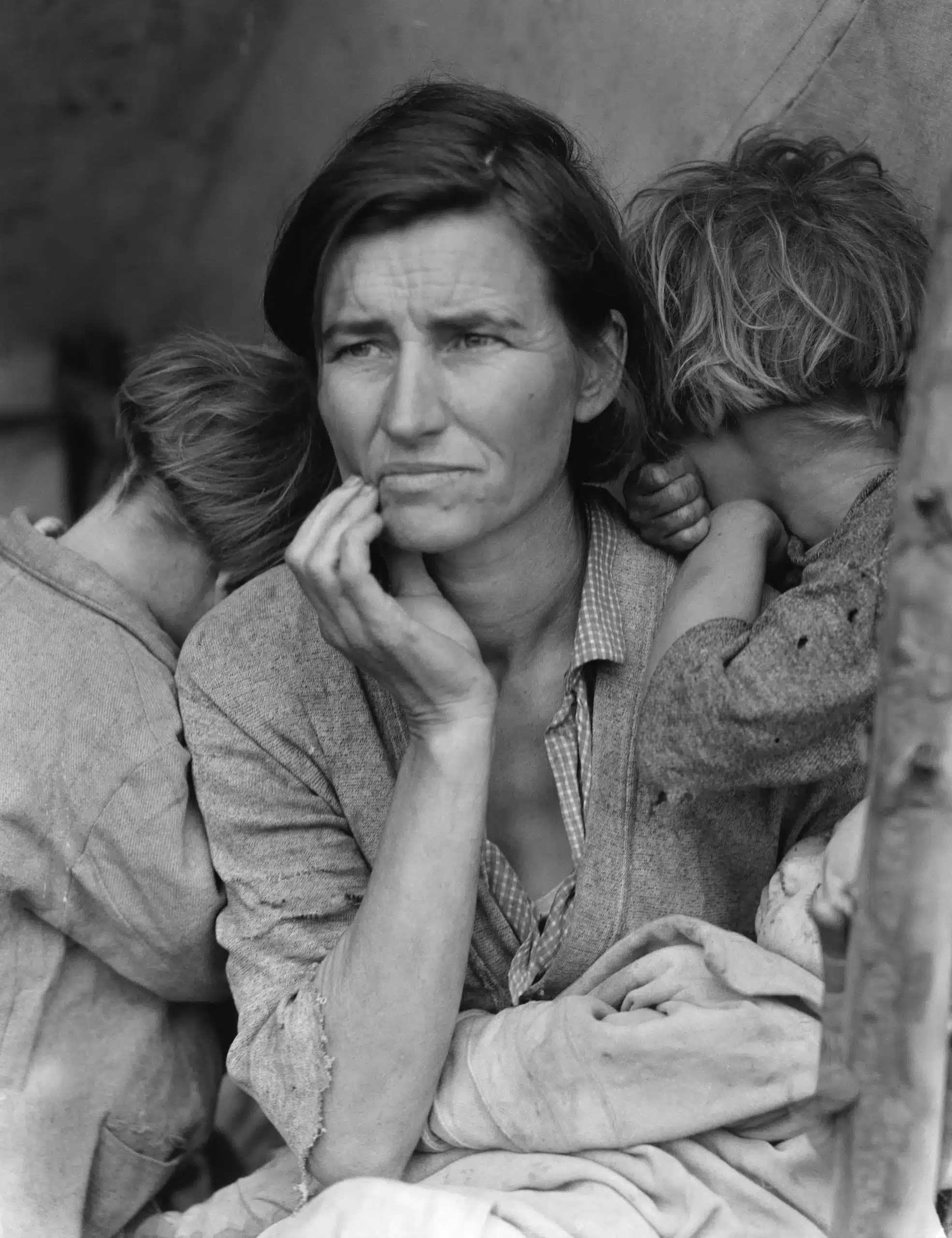Dorothea Lange was more than a documentary photographer—she was a visual storyteller of human resilience. Known best for her iconic work during the Great Depression, Lange’s images are not just historical records; they are intimate portraits of strength, struggle, and survival.
Artistic Philosophy
At the core of Lange’s work was a belief that the camera is not just a machine—it’s a tool for empathy. Her lens never stole—it offered solidarity. She didn’t just show hardship; she revealed the quiet strength beneath it.
Signature Work
Her most famous image, Migrant Mother (1936), captured the exhaustion and resolve of Florence Owens Thompson during the Dust Bowl era. The image became a symbol—not just of suffering—but of enduring grace. In every frame, Lange asked us not to pity, but to understand.
Process
Lange worked close to her subjects, earning their trust before pressing the shutter. Her approach was slow, intentional, and deeply humane. She believed in the power of visual truth—and its ability to shape public opinion, policy, and perception.
Why Her Work Matters
In a world often quick to look away, Lange looked closer. Her photographs remind us that behind every crisis is a human face—and behind every human face, a story worth hearing. Her legacy is a quiet call to compassion, justice, and care.



